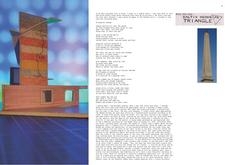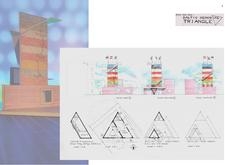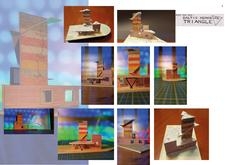5 key facts about this project
At its core, the project represents more than just a physical structure; it is a manifestation of community values and aspirations. The architecture serves a dual purpose: it is both a space for interaction and a hub for various activities, thereby fostering a sense of belonging among its users. With a strong emphasis on social connectivity, the design encourages engagement within the space while simultaneously supporting the broader objectives of the community.
The building's layout showcases a clear understanding of spatial dynamics and user experience. Open-plan areas welcome natural light, creating warm, inviting spaces. In contrast, defined zones cater to specific functions, ensuring that diverse activities can occur simultaneously without disruption. The thoughtful arrangement of spaces allows for fluid interactions between users, enhancing collaboration and socialization. Furthermore, the integration of versatile communal areas serves to promote gatherings, whether informal meetings or organized events.
In terms of materiality, the project employs a carefully selected palette that resonates with its surroundings. The use of locally sourced materials not only reduces the environmental impact but also reflects the cultural identity of the region. Expansive glass façades introduce transparency while blurring the boundaries between indoor and outdoor environments. The natural textures of wood and stone complement the modern elements, creating a balance that is visually appealing yet non-intrusive. Each material choice plays a critical role, providing functionality while contributing to the overall aesthetic harmony of the design.
Unique to this project is its innovative approach to sustainability. The architecture incorporates passive design strategies to optimize energy efficiency, such as strategic roof overhangs and well-placed windows that maximize natural ventilation. The inclusion of green roofs not only enhances biodiversity but also contributes to thermal performance, reducing the overall energy demands of the building. Rainwater collection systems are discreetly integrated, demonstrating a commitment to environmental stewardship that is both practical and responsible.
The architectural design further distinguishes itself through its scalability, offering various spaces that cater to different user needs. This flexibility is an essential feature, allowing the project to adapt over time as community needs evolve. Whether it is accommodating larger gatherings or providing quiet study areas, the design remains responsive and versatile.
Additionally, attention to detail is evident throughout the project, with carefully considered elements that enhance usability and comfort. Ergonomic furniture, accessible pathways, and intuitive signage contribute to a user-friendly experience. The architectural ethos of inclusivity is apparent, ensuring that the building is accessible to everyone and can be utilized in myriad ways.
As the project continues to serve the community, it stands as a testament to thoughtful architecture that prioritizes human experience while maintaining a respectful dialogue with its context. By exploring its architectural plans, sections, and designs, one can gain a deeper understanding of how each facet interacts cohesively to create an enriching environment. This project invites readers to delve into its presentation to discover the intricate details and innovative ideas that define its essence, showcasing the potential of architecture to not only fulfill practical needs but also inspire community growth and connection.


























